Key insights from the E-commerce in Europe 2020 Report by PostNord
Written by
Kinga EdwardsPublished on

This year e-commerce has faced some kind of revolution. Pandemic has changed many aspects of peoples’ lives, including shopping habits. How does the situation look now? We will try to answer this question by covering the E-commerce in Europe 2020 Report by PostNord.
Below you can find some highlights referring to the e-commerce situation around the world. If you are interested in reading the full report, you can download it here.
European e-commerce before COVID-19
E-commerce in Europe has changed over the years, and 2020 has further accelerated these changes. This year, many consumers have opted for online shopping, some of them for the first time. Comparing 2019 and 2020, there was a 15% increase in average sales per person.
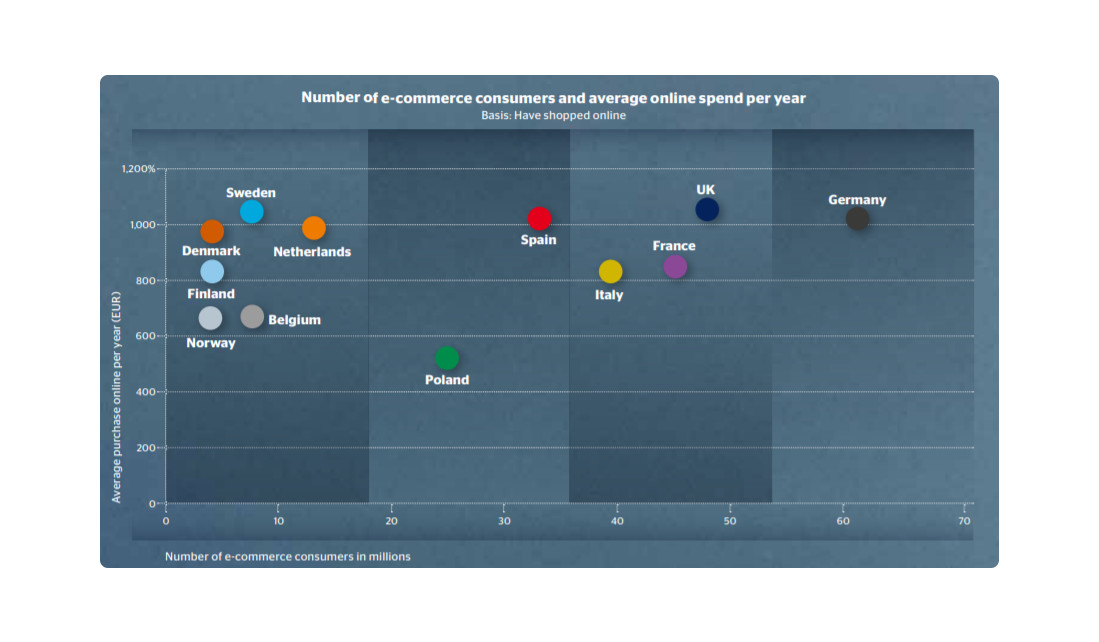
The strongest players in the European e-commerce market are Germany and Great Britain. Then come France, Italy, and Spain.
In 2019, global e-commerce accounted for approximately 14% of total retail sales in the world. Europe generated 10%. It is estimated that last year there was a 21% increase in this market, while this year it is expected to be even higher. Especially in mature markets such as Western Europe, which have taken advantage of the pandemic’s increased demand.
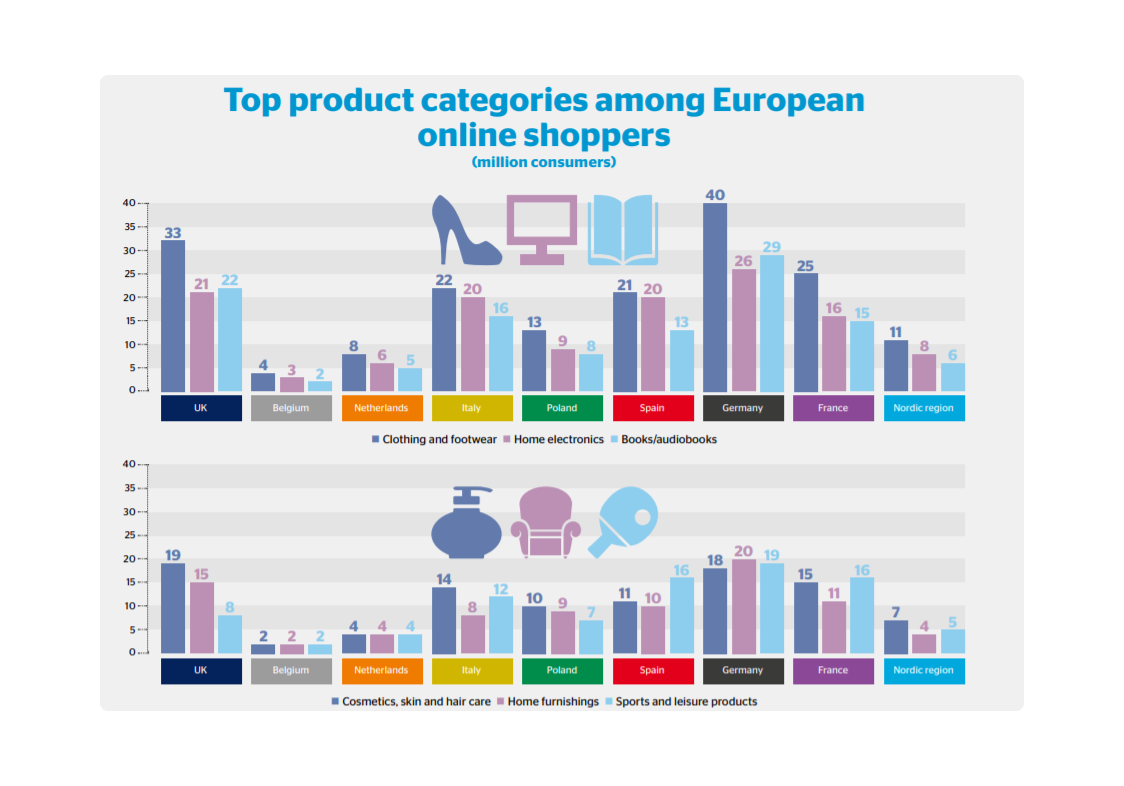
What do people buy online? The most often purchase are clothes and footwear, then electronic appliances and book/e-books. Also, cosmetics, skincare, and hair care products have some fans across Europe. What’s more – home furnishing and sports products are bought online quite often, too.
COVID-19 as a driving factor of European e-commerce
For the purposes of the report, a survey was conducted in which respondents were asked about COVID-19 – how it influenced their purchasing behavior. Not surprisingly, the impact is clear – in countries where pandemic fear was high, the proportion of online shoppers was also higher. It can be seen that this goes hand in hand with the most severe course of the epidemic.
Countries such as Italy, Spain, and Belgium recorded the most significant increase in online shopping popularity. It is very likely that countries like Spain and Italy, where e-commerce was not at a very high level before the pandemic, have experienced significant growth due not only to people’s fear but also to closed stores. Simple as that. As a result, it influenced consumers’ purchasing behavior and their habits in longer terms, even after re-opening stores.
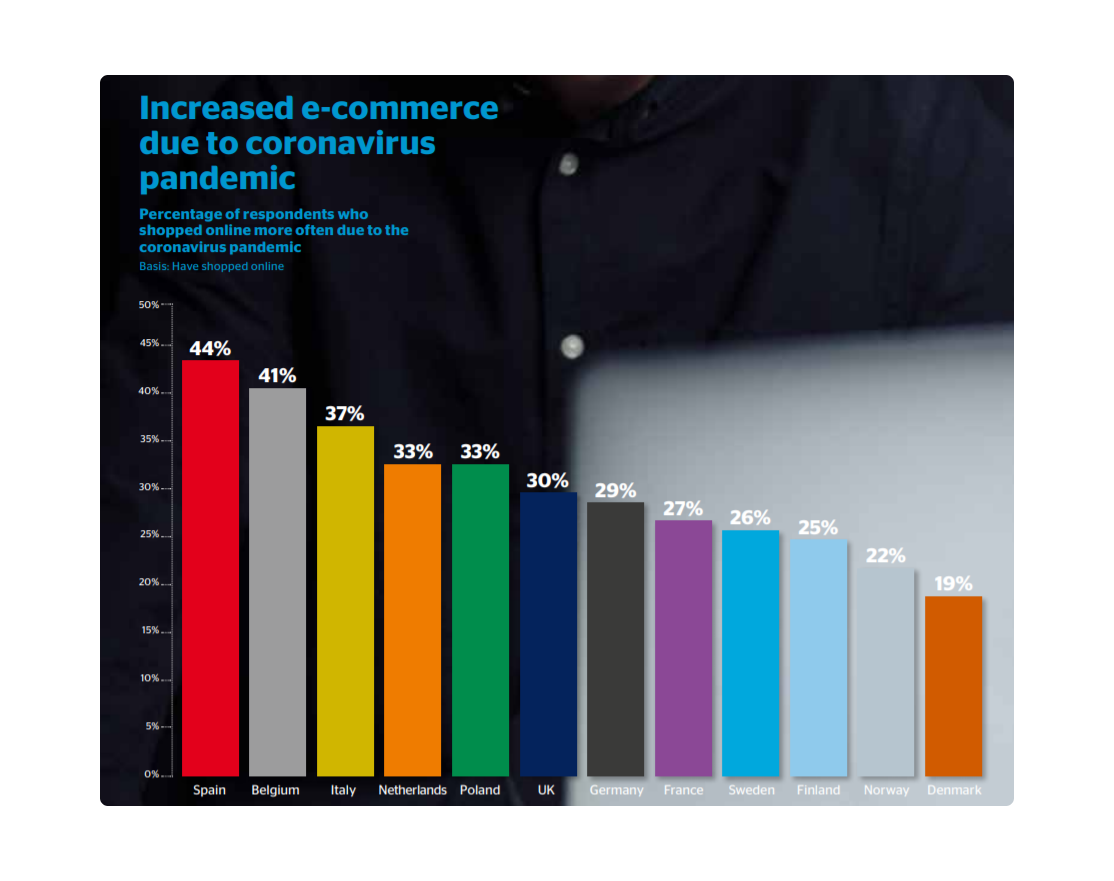
An example of a country where fear of pandemic was not huge is Switzerland. However, a rise in the popularity of e-commerce has been recorded. In this country, it is not related to government restrictions but rather due to consumer awareness.
One of the markets for which the entry into digital was relatively new were grocery stores and pharmacies. The highest growth in this e-commerce segment was noted in Spain, France, UK, and Italy. What do these countries have in common? A rather severe pandemic course made it difficult to go out even for the most necessary products, such as food or medicines. Even if that happened, it was associated with fear.
Western Europe vs. Eastern Europe
What characterizes the Old Continent is the differentiation between specific parts. In the case of digital, the differences between Eastern and Western Europe are significant. In the west, the spread of the Internet dates back to the early 1990s, while the countries of Eastern Europe, which mostly belonged to the Soviet bloc, had to wait for the development of digitization. The difference between these parts of the continent has decreased over time as Eastern Europe has recorded a greater growth rate of e-commerce. But it started from the lower position.
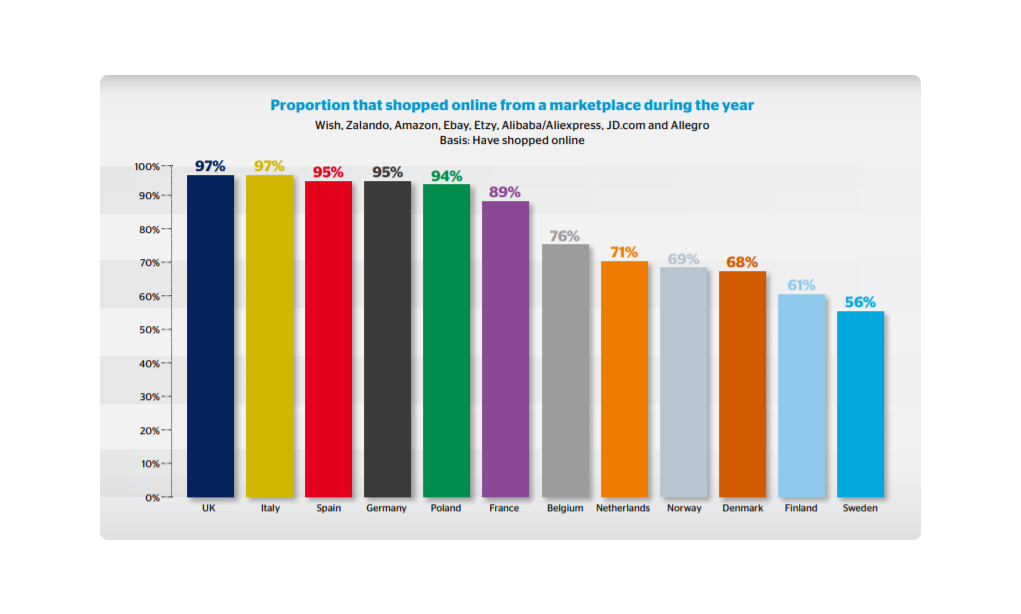
Despite the generalization, the countries of Eastern Europe also differ from each other. For example, the Baltic countries surpass the EU average in terms of digitization, while the Czech Republic is more or less on par. Other countries are below this average.
Poland is one of the countries where the e-commerce market has developed very well. This country is an example of another difference between East and West Europe. Eastern consumers prefer shopping on websites that offer their language, choosing to shop locally. In Poland, these requirements were met by marketplace Allegro, which resisted foreign competitors’ pressure and has maintained a high position on the market. As many as 9 out of 10 Poles reported that they purchased via this platform at least once during the whole year.
Pandemic – a challenge for logistics
Delivery time is one of those factors that greatly affect customer satisfaction with e-commerce. However, it is also conditioned by many aspects – especially when shipments cross-country borders. European consumers are perceived as demanding when it comes to delivery. Anyway, the pandemic forced them to slightly lower their demands.
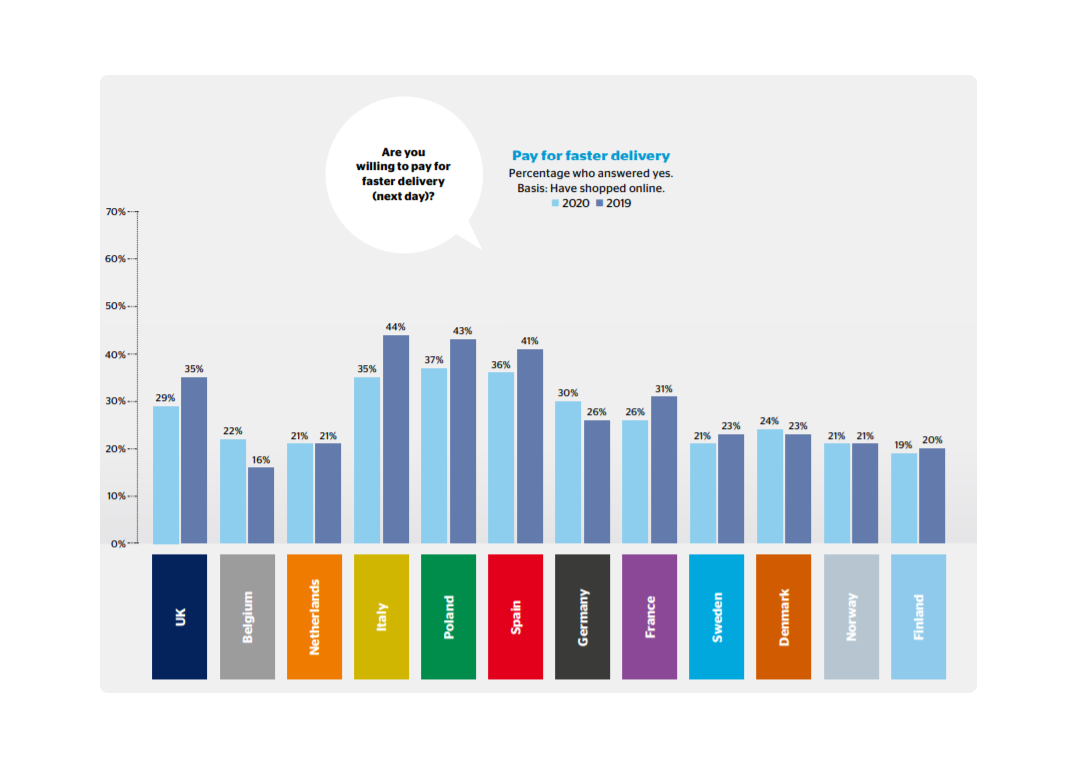
Logistics faced a real challenge when the pandemic began. Nobody was prepared for such a sharp and high increase in demand. Nevertheless, few consumers are willing to pay extra for fast delivery, probably because retail giants like Amazon or Zalando have accustomed Europeans to fast delivery at no additional cost.
Payment preferences across Europe

The development of digitization brings not only the popularity of e-commerce but also the expansion of the payment offer. While cards and invoices remain popular, digital payment solutions are also gaining fans. One of them is PayPal, which won the hearts of Europeans. The key to the success of this solution may be combining it with the universality of the email box.
Many banks have also established cooperation in order to create an application for mobile payments. They have different names in different countries – Swedish Swish or Danish Mobile Pay, but they are based on the same principle. Initially, they were selected only for private payments, but more and more often, they are used for commercial transactions.
After covering the European e-commerce situation this year, let’s take a closer look at the German market.
Coronavirus in Germany
German GDP has suffered – between the first quarter of 2019 and this year it fell by 2.2 pp. Economically, the German government has done better than many European countries. The first restrictions were introduced on March 13, followed by a lockdown ten days later. Almost 30% of German consumers admitted that they shopped online more oftendue tof the pandemic.
The e-commerce market is mature here. Over 90% of consumers shop online. Given the large population of Germany, the potential for growth still exists. The German Otto group has invested in the development of e-commerce and competes with Amazon on the German market. Staying on the topic of marketplaces, Amazon launched its platform on the German domain. It is predicted that this marketplace generates nearly 30% of total e-commerce. Other important players in the German Internet are the above-mentioned native Otto and eBay.
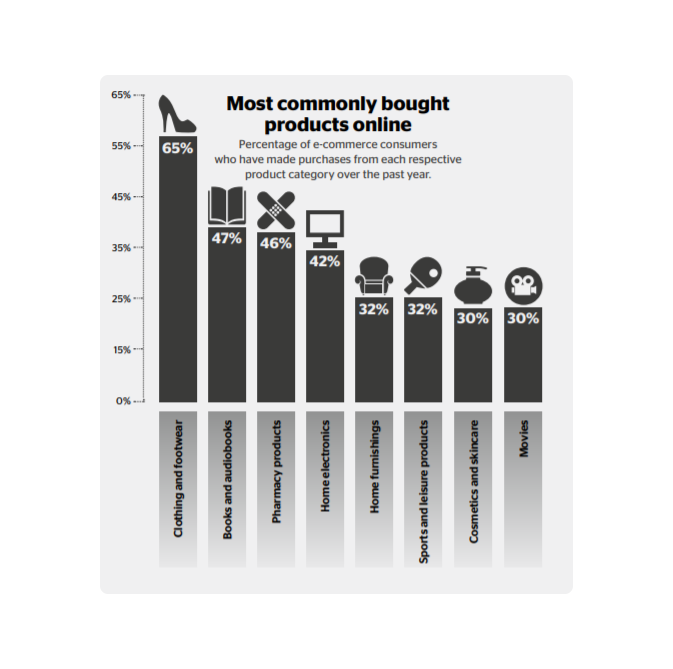
What products are buying the most often via the Internet? Clothes and shoes, then come books and medicines. In the clothing segment, Zalando is the leader – 8% of domestic retail sales.
To wrap up
In this report, you will find a lot of useful data on European e-commerce and its state during the pandemic. All related matters are covered. There is also an overview of individual countries and their situation.
Above, you have read a brief overview. We have hope that it encouraged you to read the entire report. You will not regret it for sure!


